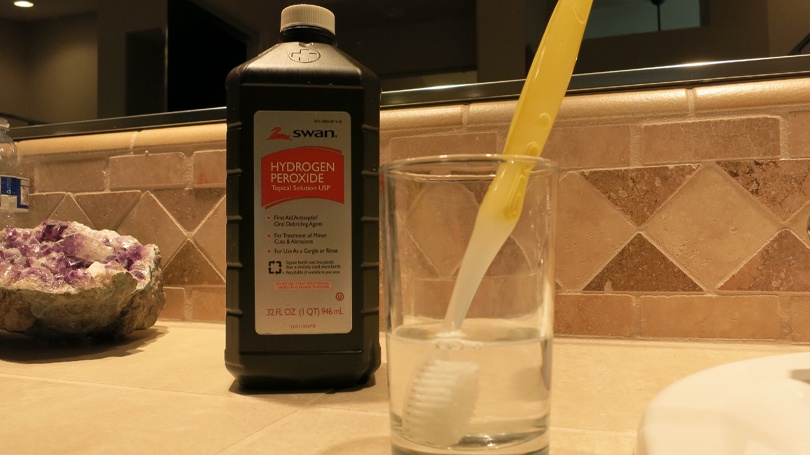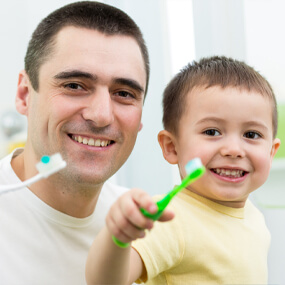Tips for Sanitizing Your Toothbrush

A toothbrush can easily be a breeding ground for germs because it is often moist and coated with oral bacteria and food particles. Many people keep their toothbrushes in their bathrooms, where there are many other germs present, and germs from illnesses can thrive on toothbrushes as well.
Proper Toothbrush Maintenance
Good toothbrush care is essential to avoiding those bacteria, viruses, and other microorganisms that can make you sick and make others in your household ill as well. Since microorganisms grow on toothbrushes after we use them, the American Dental Association recommends cleaning your toothbrush prior to using it and after. Rinsing the bristles thoroughly with clean water is enough to clear any toothpaste, food debris, and microorganisms if you clean and sanitize your brush on a regular basis. When you store your toothbrush, the ADA recommends that the brush be placed in an upright position, not be touching other toothbrushes, and be able to air dry. The ADA also recommends replacing your toothbrush as soon as the bristles fray or about every three to four months, regardless of the bristles.
Sanitizing Your Toothbrush Bristles
The ADA also recommends that you sanitize your toothbrush on a weekly basis. Once a week is enough, and any more than that can cause the bristles to wear unnecessarily fast. Note that rather than disinfect toothbrushes after an illness, simply discard them and replace them with new brushes. When it comes to disinfecting toothbrushes, you have options and can choose the one that you prefer.
- Soak the bristles in an antibacterial oral rinse for 30 seconds.
- Immerse the brush head in 1 cup of water and 1 teaspoon of hydrogen peroxide for several minutes.
- Bathe your toothbrush head in vinegar overnight.
- Mix 2 teaspoons of baking soda and 1 cup of water. Soak the bristles for several minutes.
- Dissolve a denture cleaning tablet according to the instructions and soak the brush head in that.
You can soak your toothbrush longer than the above recommendations. Many people prefer to soak for up to five minutes. When it comes to harsher cleaning agents, such as mouthwash and hydrogen peroxide, you should not soak for more than 15 minutes. While boiling a toothbrush in water can kill germs, the heat can also warp the plastic, and so this technique is usually not advised.
Proper Storage Is Just as Important as Cleaning
If you store your brush improperly, it does not matter how well you clean and sanitize your brush. Purchase a holder that keeps toothbrushes separate, lets them stand upright, and exposes them to the air. Airflow keeps the brush dry and helps to avoid bacterial growth. A portable toothbrush container is all right when traveling, but when you get to the room, sanitize and let it air dry.
Consider UV Sterilization
While UV sterilization devices are not as cheap as basic toothbrush holders, these technologies have dropped in price considerably in recent years, which makes it a more practical option for many. Many of the popular UV sterilizers on the market are wall-mounted and allow the brushes to hang from the heads. The sanitizing light cleans the bristles automatically, so no manual sterilization is required. Note that even with a sterilizer, you should clean your brush with water before and after use.
Keep Your Toothbrush Sterilized
Jeffrey D. Clark, DDS, is a leading dentist in Arizona that recommends cleaning your toothbrush on a daily basis, sterilizing it on a weekly basis, and replacing it with a new one every three months or sooner if the bristles have frayed. You should also brush and floss twice a day, and doing so with a clean toothbrush will make those efforts more effective. Dr. Clark also advises patients to visit him twice a year to have their teeth cleaned and a regular checkup performed. Schedule that appointment at Scottsdale Cosmetic Dentistry Excellence today by calling us at 480 585 1853.




